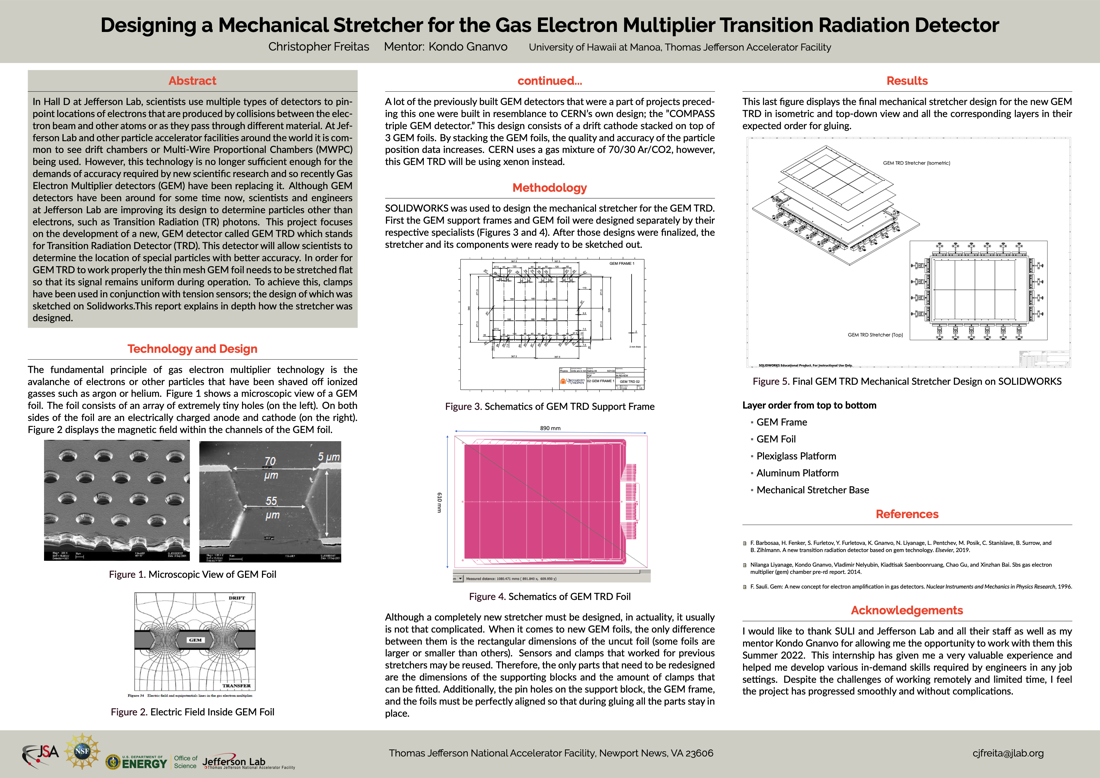Undergraduate Research at Jefferson Lab
Designing a Mechanical Stretcher for the Gas Electron Multiplier Transition Radiation Detector in Hall D
Student: Christopher Freitas
School: University of Hawaii at Manoa
Mentored By: Kondo Gnanvo
In Hall D at Jefferson Lab, scientists use multiple types of detectors to pinpoint locations of electrons that are produced by collisions between the electron beam and other atoms or as they pass through different material. At Jefferson Lab and other particle accelerator facilities around the world it is common to see drift chambers or Multi-Wire Proportional Chambers (MWPC) being used. However, this technology is no longer sufficient enough for the demands of accuracy required by new scientific research and so recently Gas Electron Multiplier detectors (GEM) have been replacing it. Although GEM detectors have been around for some time now, scientists and engineers at Jefferson Lab are improving its design to determine particles other than electrons, such as Transition Radiation (TR) photons. This project focuses on the development of a new, GEM detector called GEM TRD which stands for Transition Radiation Detector (TRD). This detector will allow scientists to determine the location of special particles with better accuracy. In order for GEM TRD to work properly the thin mesh GEM foil needs to be stretched flat so that its signal remains uniform during operation. To achieve this, clamps have been used in conjunction with tension sensors; the design of which was sketched on Solidworks. This report explains in depth how the stretcher was designed.
[Watch the presentation on YouTube]

Citation and linking information
For questions about this page, please contact Education Web Administrator.
